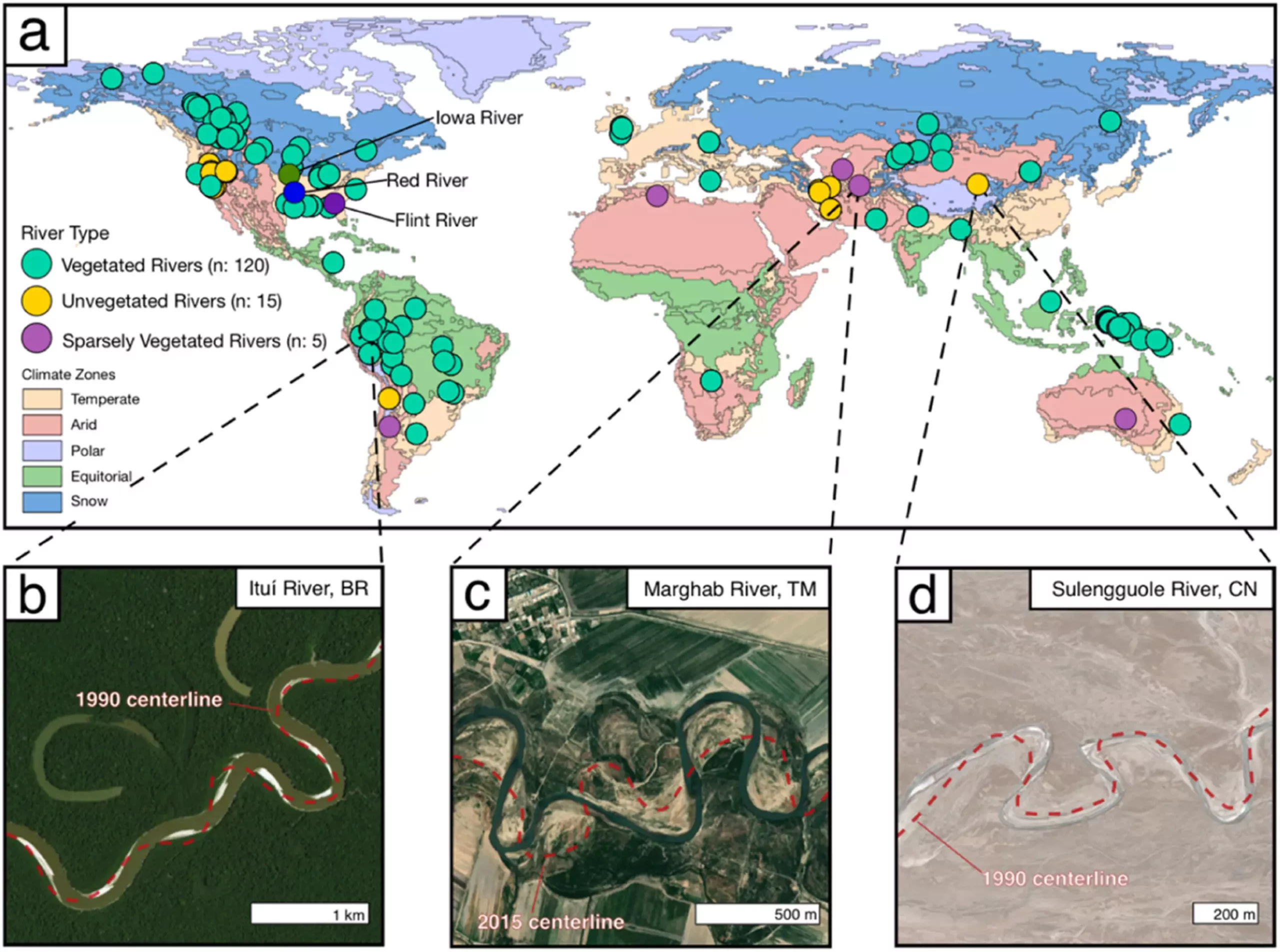Meandering rivers are constantly on the move, carving out landscapes and shaping the environment. A study conducted by UC Santa Barbara sheds light on the factors influencing the migration rates of these waterways. The research, published in the journal Earth and Planetary Science Letters, challenges previous assumptions regarding the impact of sediment load and vegetation on meander migration.
The Role of Sediment Load and Vegetation
Lead author Evan Greenberg and senior author Vamsi Ganti analyzed a global dataset of meandering rivers, examining how sediment load and vegetation affect the movement of river channels. Contrary to popular belief, their findings suggest that sediment load plays a significant role in driving meander migration rates. While vegetation has traditionally been viewed as a stabilizing factor, the researchers highlight the intricate interplay between sediment deposition and bank stabilization by vegetation.
Two primary forces, known as bar push and bank pull, exert influence on the migration of river bends. Bar push occurs when sediment deposition on the inside of a bend forms a sandbar, pushing the curve outward. In contrast, erosion on the opposite bank leads to further outward movement of the bend. The study revealed that sediment load primarily impacts bar push, while vegetation plays a crucial role in bank pull. This dynamic interaction shapes the overall behavior of meandering rivers.
Insights from Data Analysis
Greenberg and Ganti compiled data from 139 meandering rivers worldwide, representing diverse geographic regions and vegetation types. By modeling river channels using satellite imagery, they tracked the shifting movement of segments over time to measure migration rates. The analysis indicated that sediment-laden rivers tended to migrate faster, emphasizing the influence of sediment load on river behavior.
The Impact of Dams on River Dynamics
Dams provide a unique case study for examining the effects of sediment trapping and vegetation disruption on river migration. By studying the movement of rivers above and below dams, researchers observed a slowdown in migration rates downstream due to sediment depletion. This highlights the critical role of sediment supply in driving meander migration. Understanding the implications of dam construction on river behavior is essential for managing floodplain risks and preserving the natural stability of meandering rivers.
The study’s findings have significant implications for predicting the behavior of meandering rivers in the face of environmental challenges such as sea-level rise and changing sediment supply. Ganti’s research suggests that rivers may become more active and less predictable, particularly with the forecasted increase in sediment supply. By expanding the scope of their model to encompass various types of rivers, researchers aim to develop a comprehensive understanding of river mobility and migration dynamics.
The complex interplay between sediment load, vegetation, and geomorphic processes shapes the behavior of meandering rivers. By unraveling the mysteries of river migration, scientists can better manage the environmental risks associated with these dynamic waterways. As the world undergoes rapid environmental changes, understanding the intricate dynamics of meandering rivers is essential for sustainable water resource management.


Leave a Reply